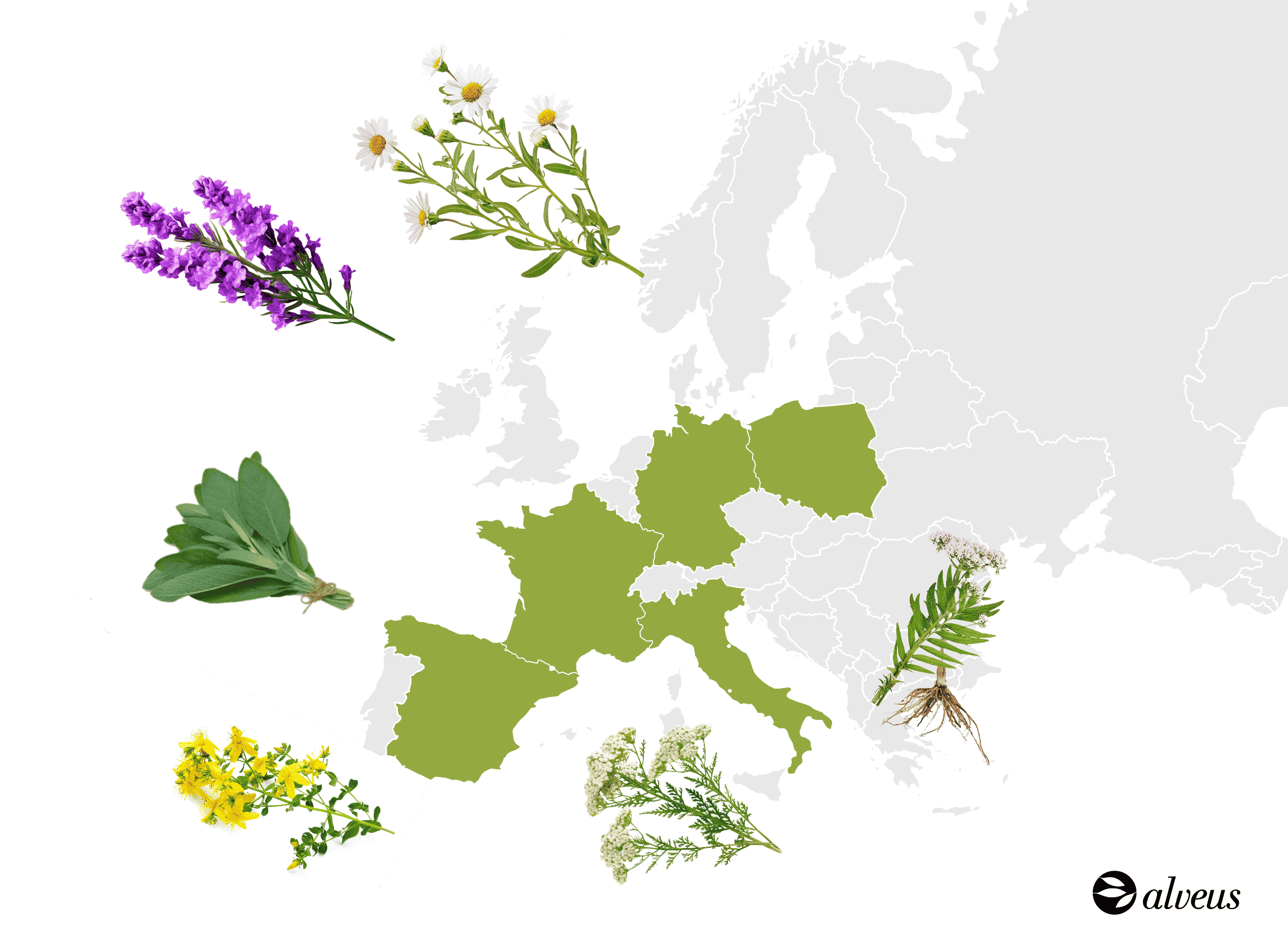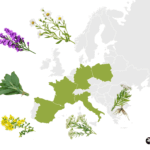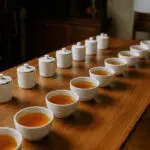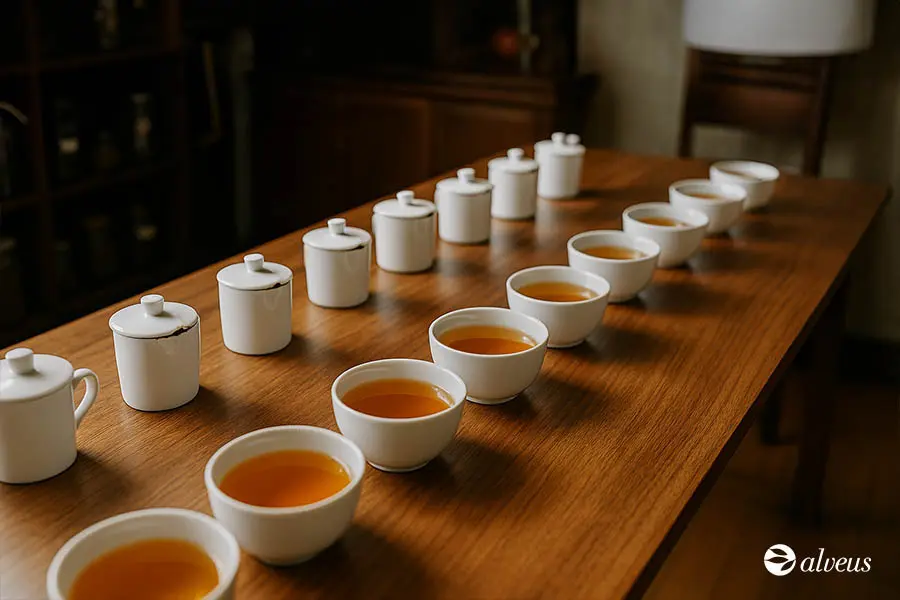Europe has long played a key role in the development of medicinal plant knowledge.
For centuries, cultures across the continent have refined their use, both in folk medicine and professional practice.
Over time, this knowledge has been passed down, enhanced, and in many cases, validated by modern science. Today, European medicinal plants continue to play a vital role in health and wellness.
Medicinal plants in Europe: Origin and use
The use of plants for healing has ancient roots in Europe. Early inhabitants learned through observing nature and the effects herbs and roots had on health.
Later, this knowledge was systematised by prominent figures such as Hippocrates and Dioscorides.
In the Middle Ages, monasteries became vital centres for preserving this knowledge. Monks cultivated herb gardens and copied ancient manuscripts describing their uses.
At the same time, Arab scholars, with their advanced medical science, introduced new species and extraction techniques, further enriching the European tradition.
The Hippocratic Theory of the Four Humours
European herbal medicine was initially based on the theory of four elements (earth, water, air, and fire) and their corresponding qualities (cold, moist, dry, and hot). This classification allowed ancient herbalists to:
- Categorise plants based on their energetic properties
- Match plants to bodily imbalances
- Create personalised treatments
- Develop more complex herbal formulas
Medicinal plants that form part of Europe’s heritage
Many of the plants used in the past are still valued today for their health benefits. Some have proven effective in modern studies, while others remain staples in traditional medicine.
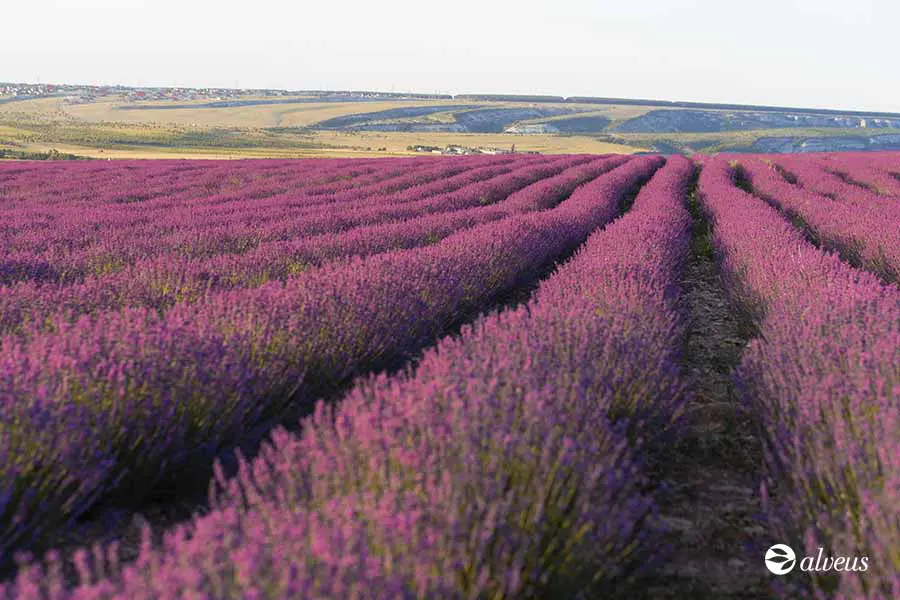
Lavender (Lavandula angustifolia)
Lavender is known for its relaxing scent and calming properties. Its essential oil contains linalool and linalyl acetate, compounds that help reduce stress and improve sleep quality.
- Traditional uses: Aromatic baths and topical oils to soothe nerves.
- Modern studies: Research confirms its anxiolytic effects and sleep-inducing properties in mild insomnia.
Valerian (Valeriana officinalis)
Valerian has been a key herb for treating insomnia and nervous disorders. Its roots contain sedative compounds that act directly on the central nervous system.
- Historical remedies: Infusions to enhance sleep and relieve anxiety.
- Current evidence: Clinical trials support its effectiveness in improving sleep and reducing stress.
Chamomile (Matricaria chamomilla)
Valerian has been a key herb for treating insomnia and nervous disorders. Its roots contain sedative compounds that act directly on the central nervous system.
- Historical remedies: Infusions to enhance sleep and relieve anxiety.
- Current evidence: Clinical trials support its effectiveness in improving sleep and reducing stress.

Sage (Salvia officinalis)
Sage has been valued since antiquity in Europe for treating digestive, respiratory and hormonal issues.
- Classic uses: Sore throat remedies and menstrual cycle regulation.
- Current benefits: Used to relieve menopause symptoms and improve memory.
Yarrow (Achillea millefolium)
Yarrow is named after the Greek hero Achilles, who, according to legend, used the plant to treat battle wounds. It contains essential oils and flavonoids with anti-inflammatory effects.
- Traditional uses: Applied to wounds to stop bleeding.
- Recent studies have shown that it relieves menstrual cramps and digestive issues.
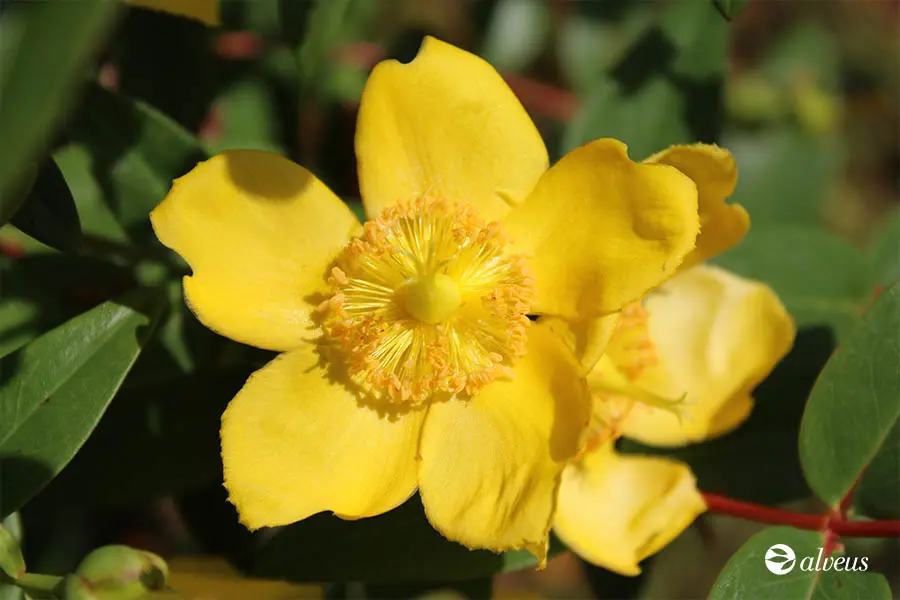
St. John’s Wort (Hypericum perforatum)
Also known as Hypericum, this plant is used to treat low moods. It contains hypericin and other compounds with antidepressant effects.
- Historical uses: To relieve melancholy and anxiety.
- Scientific validation: Backed by studies for treating mild depression.
How medicinal plant knowledge was passed down through generations
The growth of medicinal plant knowledge in Europe was driven by several factors, the invention of the printing press in the 15th century being the most important.
It allowed for the mass dissemination of specialised books like De Historia Stirpium by Leonhart Fuchs and The English Physitian by Nicholas Culpeper.
These texts provided detailed descriptions of plants, their uses, and their preparation methods.
During the Renaissance, botanists and physicians worked to standardise this knowledge, promoting access and encouraging idea exchange across regions. This helped preserve and evolve traditional remedies.
The modern-day impact of European medicinal plants

Today, many plants traditionally used in Europe have undergone scientific research, validating their efficacy and improving how they’re applied.
This has led to the integration of herbal medicine into modern healthcare, especially in preventive and complementary medicine.
Key benefits include:
- Reduced overuse of synthetic drugs: Medicinal plants provide natural alternatives for minor ailments.
- Stronger immune system: Plants like echinacea help boost the body’s defences.
- Digestive and nervous system support: Valerian, chamomile, and mint infusions promote internal balance.
Current standards in herbal product production include organic cultivation, quality control, and regulation of active compound content. This ensures that consumers have access to safe and effective products.
Challenges and opportunities in using medicinal plants
Although medicinal plant use is on the rise, some challenges remain. Sustainable cultivation and protecting endangered species are top concerns.
Climate change and overharvesting may impact the availability of certain plants.
On the other hand, research continues to progress. New extraction and formulation technologies are improving the bioavailability of active compounds, increasing treatment effectiveness.
Studies are also exploring synergies between plants, enabling the development of more effective herbal formulas.


